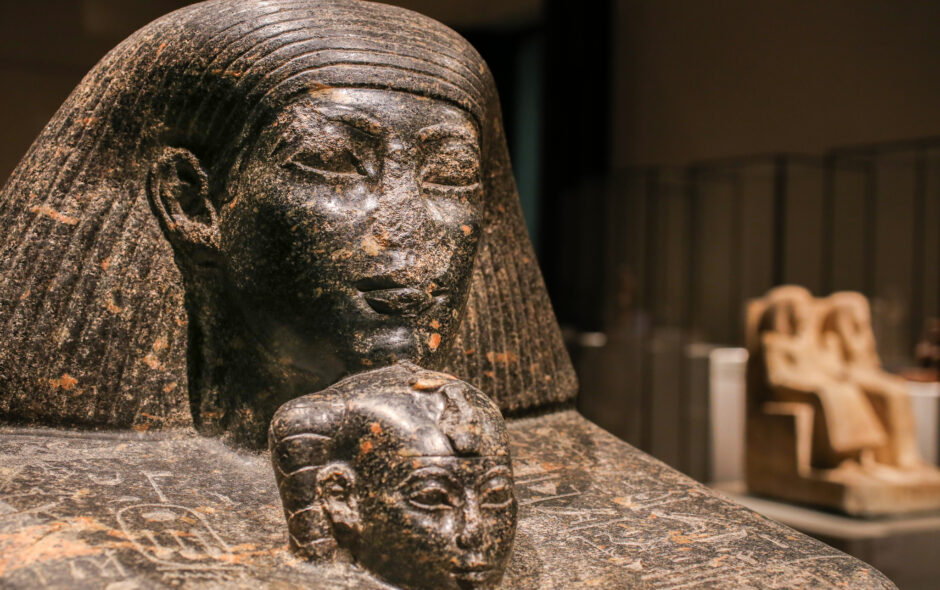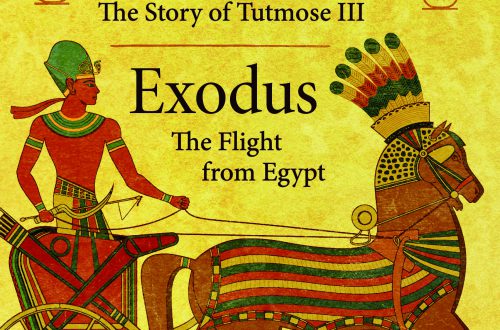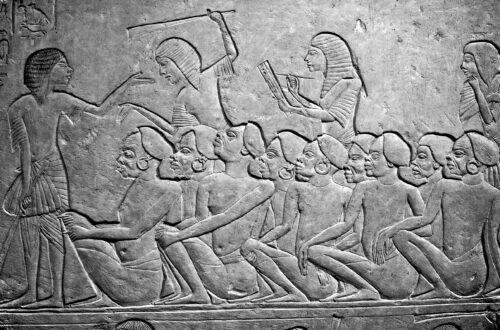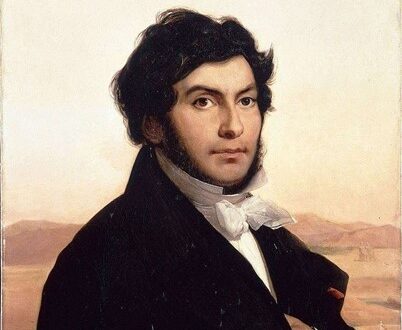It is my contention that the man Senenmut, a well-known figure in the Egyptian court during the reign of pharaoh Hatshepsut, is the same man known in the bible as the adopted son of the Pharaoh’s daughter whom she named ‘Mose’. My reasons are as follows.
‘Mose’ means son, in the ancient Egyptian language, and the bible tells us that it was the Pharaoh’s daughter who named him.
If we look at the dating given in the bible, Mose comes on the scene when the only truly royal ‘Pharaoh’s daughter’ was ‘Hatshepsut’, the only surviving child of Tutmose l and his ‘Great Royal Wife,’ ‘Ahmose’. It is hard to understand why a woman of such high standing as ‘the pharaoh’s daughter’ would adopt a slave child, so what could have made her do it? My conclusion is that she was probably still very young, perhaps ten years old, living away from the court in the royal harem in the north, when she found him. Little girls have an instinct to protect helpless creatures. We are told that he was a beautiful child, and when she found him, he was crying. A little girl of this age could not have walked away and left such a helpless infant to die. And as the pharaoh’s daughter she could call the shots in her world, in the harem. So this is my assumption. She found him abandoned when she herself was very young, and this story is told in my first book, ‘The King and her children’. We are told she was the one who named him, and that she adopted him as her son.
‘Messes’ means ‘son’ as in ‘Ramesses’, son of ‘Ra’, the sun god, and is the same word as ‘mose’, as in ‘Tutmose’, son of ‘Thoth’ the god of wisdom. Note that vowels are not given, and have to be assumed.
For the first 14 years of his life, Senenmut was the only child in the royal house. Hatshepsut was married to her half-brother Tutmose ll, as was traditional in the royal house, but there was no son born to them. They had only one daughter, Nepherure, born when Senenmut was about 14, so Hatshepsut could hope that her adopted son would be accepted as the next pharaoh. And if he was given this daughter, his step-sister Nepherure, who was the ‘Royal Heiress’, as wife, his kingship would have been assured. But when Mose was 16 years of age, a son was born to Tutmose ll by a harem woman, and on his father death, two years later, this child became Pharaoh Tutmose lll.
Now Hatshepsut’s plans were thwarted, preventing her from making her adopted son king. She was made Regent for the new pharaoh, but he was a very young child and was not strong. She also realised, that as Regent she could not pass the throne to her adopted son, even if the young pharaoh Tutmose lll died. But if she made herself Pharaoh, reigning beside Tutmose lll, she may be able to.
It was an acceptable practice to have two pharaohs when one was old and may not live, so why not when one was young and may not live? But now Mose saw the temptation that his mother faced, to help nature along and make sure the young Tutmose did not live. Realising this, ‘when he came of age’, probably around the age of 17, we are told in the bible1, that ‘Mose refused to be called the Son of Pharaoh’s daughter,’ removing himself as a possible rival to Tutmose, because he knew his mother’s ambition could lead to murder. She did not want her dead husband’s child to rule. She wanted her adopted son to rule.
So Mose deliberately stepped back from his high position. He did this firstly by changing his name, removing the name ‘son’ and instead created a name making himself Hatshepsut’s brother. ‘Senenmut’ means ‘mother’s brother’. They were close in age, with about 10 years between them, so this was a logical choice, that retained the kinship while removing him as a rival for the throne.
Senenmut, now around 18 years of age, became Hatshepsut’s right-hand man, and achieved great fame both in Egypt and beyond. Joyce Tyldesley, the well-known Egyptologists, in her book ‘Hatshepsut’, writes a chapter entirely about Senenmut, entitled – ‘The Greatest of the Great’.
But at the age of 40, when he was forced to flee Egypt to save his life, Senemut must disappear, and to do so he must get rid of his name which was unique and very well known. But what name should he use? He chose to return to the childhood name his mother gave him when she adopted him; Mose, known to us as ‘Moses’.
Looking at Hatshepsut’s life and the way Egypt turned so vehemently against her 30 years after her death, one has to ask why. But if she was the woman who had adopted and raised the slave child Moses, who years later forced Egypt to give up her Hebrew slaves, bringing an end to Egypt’s expansionist policies in Syria, it is understandable that she would be hated and punished severely.
(In my second book, ‘The Napoleon of Egypt’ I have used the name Moshe instead of Mose as it is in more common use today.)
- The bible, book of Hebrews 11 v24 ↩︎



